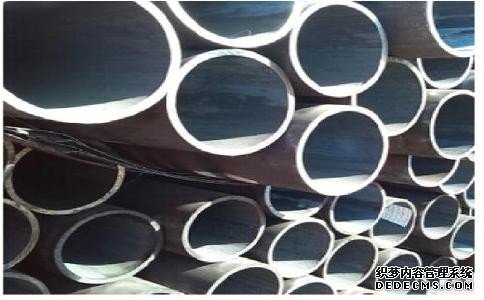How to test straight seam steel pipe welds
TPCOHow to test straight seam steel pipe welds
Before the non-destructive testing of straight seam steel pipe, the weld appearance inspection should meet the requirements. For the straight seam steel pipe weld seam appearance and welding surface quality of the general welding surface should be formed excellent, the width of each side covered with a groove edge of 2mm is appropriate. The height of the fillet of the fillet weld should be suitable for the design regulations and the appearance should be smooth transition. No cracks, no fusion, pores, inclusions, or splashes are allowed.

Pipes with a design temperature of less than -29 degrees, stainless steel, and the surface of the weld seam of hardened alloy steel pipes must not be undercut. The depth of undercut of the other material pipeline welds shall be greater than 0.5mm, the length of continuous undercut shall not be greater than 100mm, and the total length of undercuts on both sides of the weld shall not be greater than 10% of the total length of the weld. The surface of the weld must not be lower than the surface of the pipe.
The remaining height of the weld is not more than 3mm, which is the width of the backgroove of the welding merchant group.
The wrong side of the welding supplier shall be no more than 10% of the wall thickness and not more than 2mm. The principle of surface non-destructive testing of straight seam steel pipe: The use of magnetic particle testing for ferromagnetic raw material steel pipe, and infiltration testing for non-ferrous magnetic material steel pipe. For non-destructive welding crackers with delayed cracks, the surface non-destructive testing shall be carried out after the welding cooling is confirmed for a certain period of time.
For non-destructive welding crackers with reheat cracks, the surface non-destructive inspection shall be carried out once after welding and after heat treatment. The use of surface non-destructive testing is performed in accordance with the requirements of the guidelines, and the object of detection and use of the scene are usually as follows.
Tube outer surface quality inspection. Critical weld seam surface defect detection. Critical fillet weld surface defect detection. Need to check the surface defects of welding sockets and cross-connected three-way branch pipes. Surface defect detection after pipe bending. Raw material quenching biased towards larger welders' groove inspection. Non-austenitic stainless steel pipe groove design with a design temperature lower than or equal to minus 29 degrees Celsius.
Double-sided weldment regulations Clear root inspection After root removal, when using oxyacetylene flame to cut hardened and distorted alloy pipes on the welding fixture, the defects of the grinding area are tested.
The main targets of ray detection and ultrasonic testing are the butt splicers of straight seam steel pipes and the butt smelters of butt welded pipe fittings. Non-destructive testing methods are adopted according to the design document regulations. For welding and quotient testing of titanium, aluminum and aluminum alloys, copper and copper alloys, nickel and nickel alloys, radiographic testing should be used.
For welds that are subject to late cracking, the ray detection and ultrasonic testing should be performed after the welding cooling is affirmed. When the main pipe in the jacket pipe has a girth weld, the weld should be planned for 100% ray inspection, and the hidden work can be carried out after the pressure test passes. Welding planners covered by reinforcing rings or support plates on pipelines shall be subject to 100% ray inspection and shall be covered before passing the examination.
Non-destructive testing shall be carried out on the welds that are used for the intermediate inspection of the constitution. The radiographs and ultrasonic inspections shall be carried out after non-destructive testing on the surface. The welds that have been tested may be welded continuously after passing the evaluation.
上一篇:CRA clad pipe and lined pipe application
下一篇:Standard for production and inspection of welding flanges

